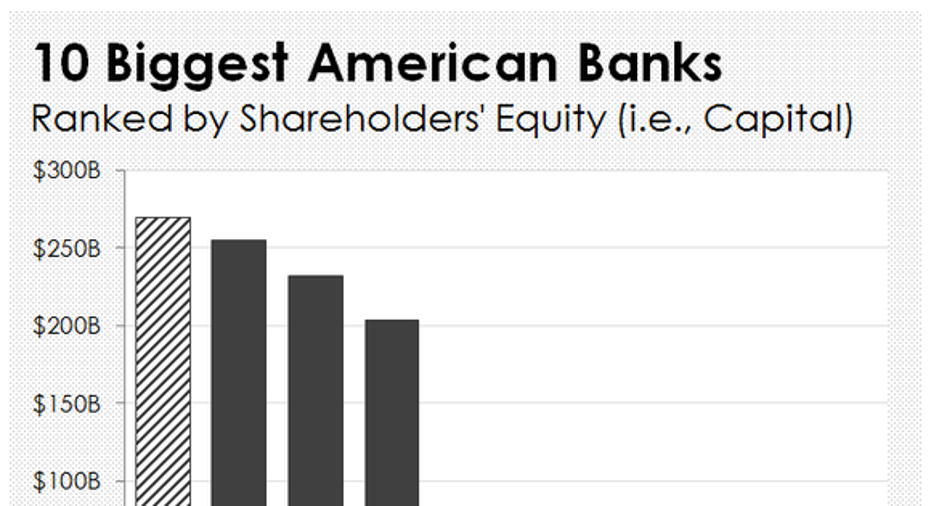Bank of Americas CEO Really Wants to Raise Its Dividend

Bank of America CEO Brian Moynihan has been pretty clear about what he wants from Santa this year. Image source: iStock/Thinkstock.
If there's one thing Bank of America (NYSE: BAC) CEO Brian Moynihan wants the freedom to do over the next few years, it's to raise the bank's still paltry dividend.
Asked last week at an industry conference what aspects of the Dodd-Frank Act that Congress and the incoming Trump administration should revisit, the 57-year-old executive singled out the ability to return more capital to shareholders:
The Fed's dividend veto
Dodd-Frank gave the Federal Reserve veto power over bank capital plans as a part of the annual stress tests. If a bank wants to raise its dividend or increase its share buyback authorization, but the Fed doesn't think it should, then the bank can't do so.
The problem for banks, as Moynihan alluded to, is that there's no way to know in advance whether the Fed will approve or deny a request. Aside from the fact that the Fed arbitrarily sets and then changes the models it uses to stress test banks each year, the Fed's decision about whether a bank did in fact pass the test turns more often than not on subjective qualitative factors.
In this year's test, the Fed required Morgan Stanley to resubmit its capital plan to address "certain weaknesses in its capital planning process." And it outright rejected the capital plans of Germany's Deutsche Bank and Spain's Santander Holdings based on "qualitative concerns."
Moynihan isn't the only major bank executive to call for more clarity and flexibility when it comes to capital plans. Wells Fargo (NYSE: WFC) CEO Tim Sloan was asked the same question at the same conference. He covered a number of changes that he'd like to see happen, but regaining control over the capital planning process was at the top of the list:
What Bank of America, Wells Fargo, and other banks want, in turn, is more certainty. If the Fed wants a bank to hold a specific amount of capital and the bank satisfies that threshold, then it should have the ability to return capital in excess of that.
Bank of America as poster child
As it is now, banks that fall out of favor with regulators and have had their capital proposals vetoed over the last few years have accumulated an obscene amount of capital on their balance sheets. Bank of America is the posterchild of this. Even though it's balance sheet is $326 billion smaller than JPMorgan Chase's (NYSE: JPM) when measured by assets, Bank of America has $16 billion worth of additional shareholders' equity -- i.e., capital.
Data source: YCharts.com. Chart by author.
There are a number of reasons for this, including the respective compositions of JPMorgan Chase and Bank of America's balance sheets, but one of the main ones is that JPMorgan Chase has been allowed to raise its dividend every year since 2011 while Bank of America has boosted its quarterly payout only twice over the same stretch.
It's impossible to say for sure whether Congress and the incoming presidential administration will tweak Dodd-Frank to give banks what they want on this score, but it's certainly reasonable to think they will. The incoming Treasury Secretary has made it clear that reforming Dodd-Frank is a priority. And Republican members of Congress, Rep. Jeb Hensarling specifically, have said that stripping the Fed's veto power over bank capital plans is a part of this broader goal.
This won't mean as much for JPMorgan Chase and Wells Fargo, as their quarterly dividends are already within the range of their stated capital strategies, but it would amount to a game changer for Bank of America.
It'd allow the North Carolina-based bank to essentially double its current quarterly payout while still distributing roughly the same percentage of its earnings as JPMorgan Chase and Wells Fargo do. Moreover, because the capital would no longer count against Bank of America when its profitability is calculated, it'd make the bank appear significantly more profitable than it is today.
10 stocks we like better than Bank of America When investing geniuses David and Tom Gardner have a stock tip, it can pay to listen. After all, the newsletter they have run for over a decade, Motley Fool Stock Advisor, has tripled the market.*
David and Tom just revealed what they believe are the 10 best stocks for investors to buy right now... and Bank of America wasn't one of them! That's right -- they think these 10 stocks are even better buys.
Click here to learn about these picks!
*Stock Advisor returns as of Nov. 7, 2016
Feel free to email John at jmaxfield@foolcontractors.comor connect with him on Twitter or LinkedIn.
John Maxfield owns shares of Bank of America and Wells Fargo. The Motley Fool owns shares of Wells Fargo. Try any of our Foolish newsletter services free for 30 days. We Fools may not all hold the same opinions, but we all believe that considering a diverse range of insights makes us better investors. The Motley Fool has a disclosure policy.